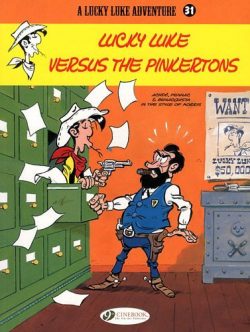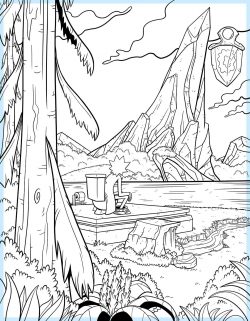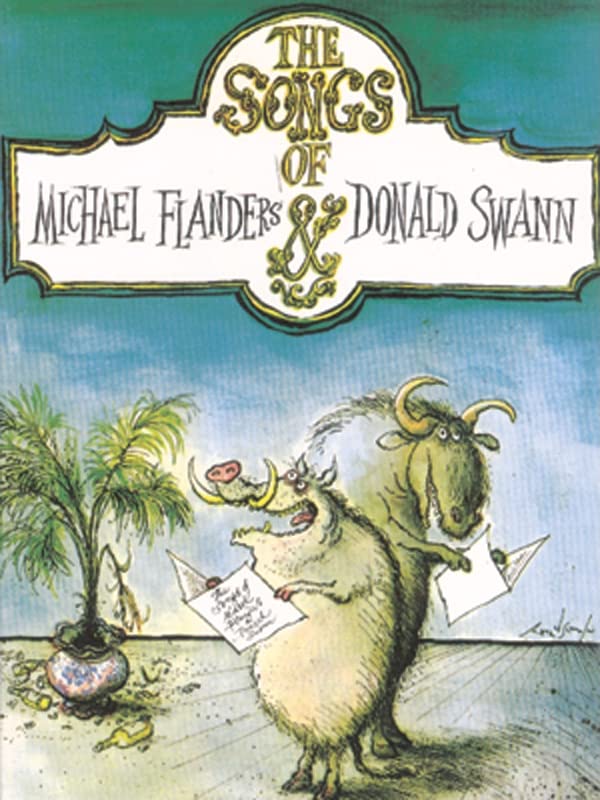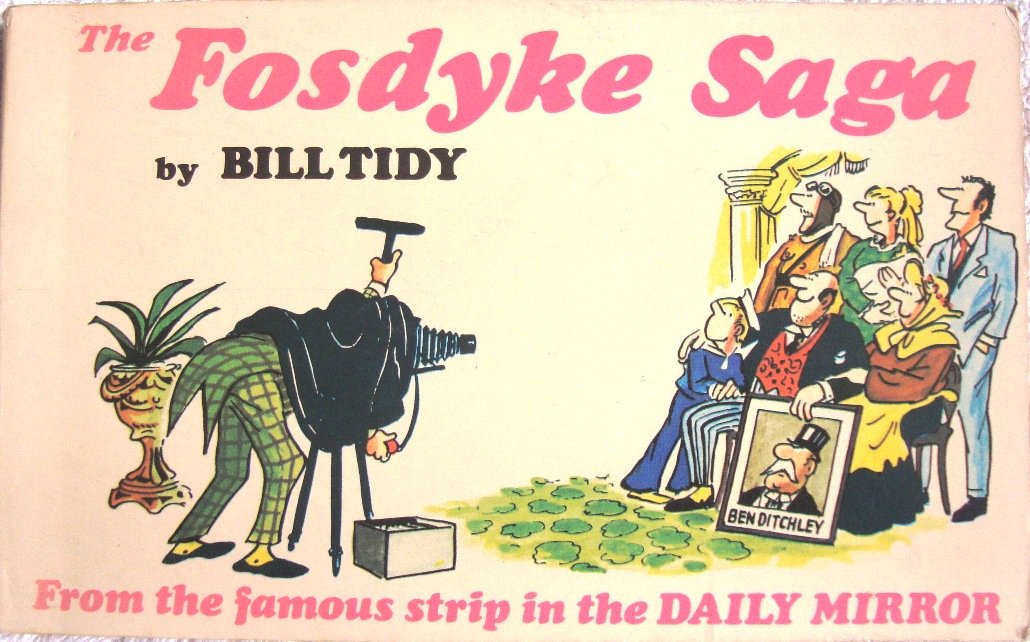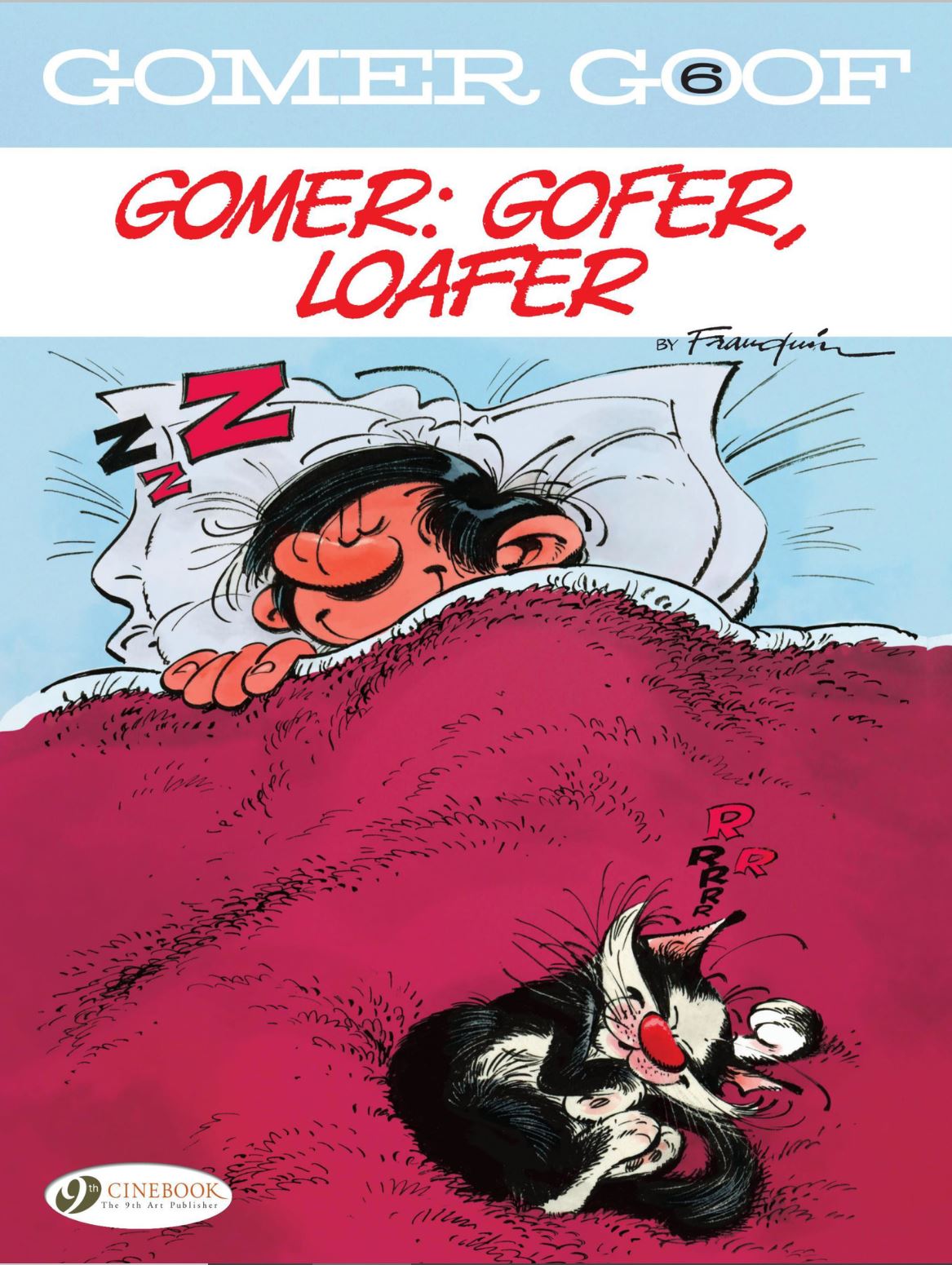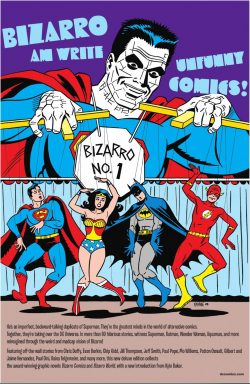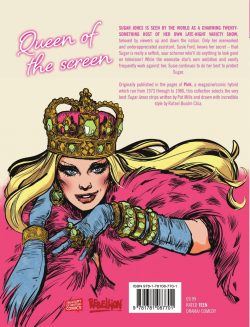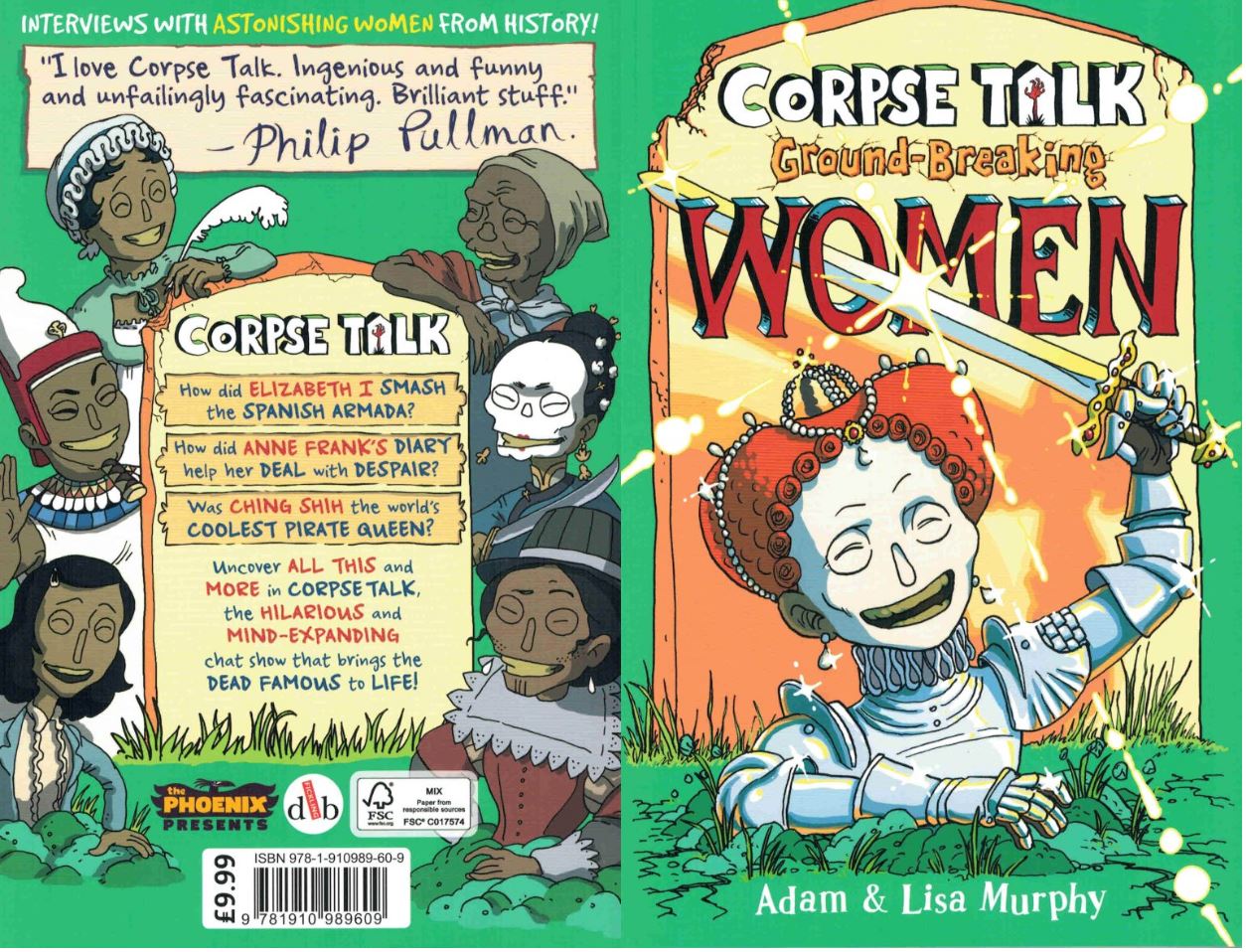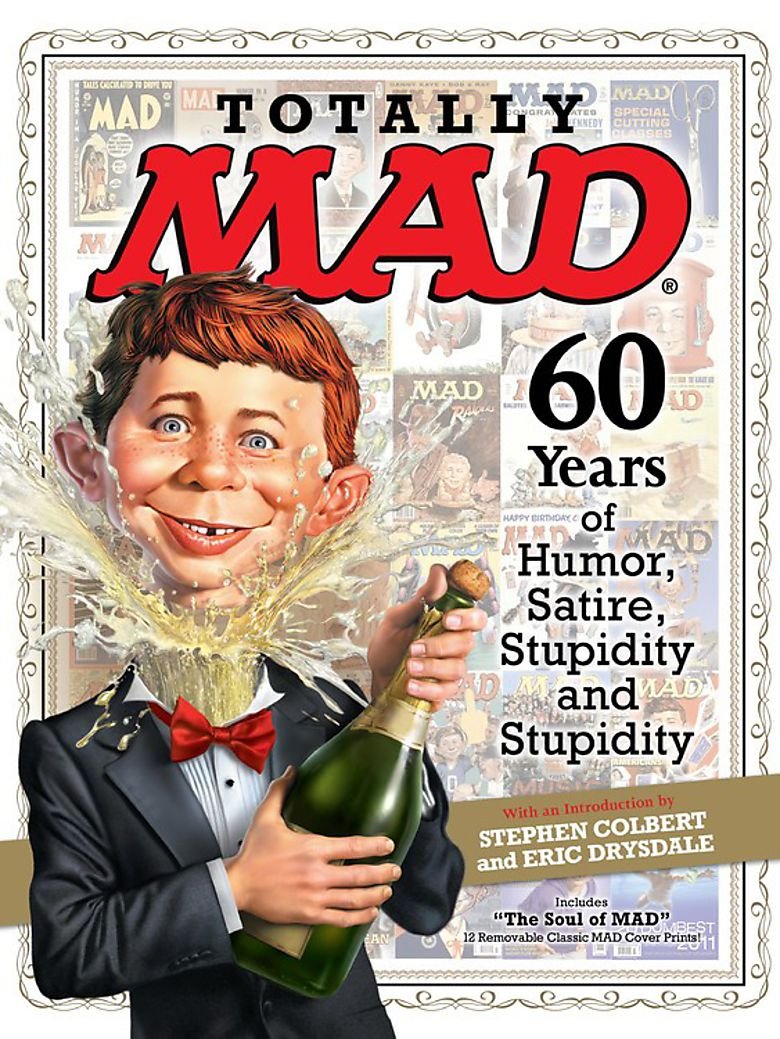
By “The Usual Gang of Idiots” & edited by John Ficarra (Time Home Entertainment)
ISBN: 978-1-61893-030-9 (HB)
The world has become a measurably less smart and infinitely less funny place over the last month or so, due to the loss of three cartooning giants many of you have probably never heard of.
As it’s unforgivably crass to bundle them all up together – especially because so little of their incredible output is readily accessible to modern readers – I’m celebrating their amazing achievements and acknowledging my personal debt to them over the next few days with items that can still be easily sourced and the heartfelt advice that if you like to laugh and have a surreal bent, these are comedy craftsmen you need to know.
We’re kicking off with the unsung god of cunningly contrived chortles…
Eldest of 4 sons, Abraham Jaffee was born in Savannah, Georgia on March 13th 1921. A successfully transplanted New Yorker, he died in the Big Apple on April 10th 2023, after three years of retirement. For 74 years – 65 of them as an invaluable and unmissable regular contributor to Mad Magazine – he had been paid to make people laugh and think…
Jaffee garnered many awards, inspired millions – including Steven Colbert, John Stewart and generations of other satirists like Gary Larson, Matt Groening and Ted Rall – and he holds the Guinness World Record for longest career as a comics artist. The writer/artist officially retired in 2020 aged 99, and between April 1964 and April 2013 appeared in all but one issue of Mad. And that’s only consecutively – he also joined earlier than you think and carried on after he quit.
Those facts barely scrape the surface of an incredible career…
Jaffee’s early life was troubled: a succession of brief stays in Savannah, Far Rockaway, Queens and Zarasai, Lithuania, resulted from his mother arbitrarily and repeatedly returning to the Old Country with her sons. Eventually he and they at last escaped domestic turmoil to settle in New York.
For escape, he read comic strips (primarily those by Harold Foster, Milton Caniff, Noel Sickles, Otto Soglow, Alex Raymond and Rube Goldberg) and devised ingenious little contraptions from rubbish and junk – a habit that served him well during his later Mad days on the long running Crazy Inventions feature…
During the 1930s, he studied at the NYC High School of Music and Art. That institution also tutored his troubled brother/lifelong assistant Harry Jaffee and future co-workers Harvey Kurtzman, Will Elder, John Severin and Al Feldstein…
Abraham was a brilliantly innovative writer and gifted, multi-disciplined artist who officially started work in late 1942: acting as an illustrator for Timely’s Joker Comics. Soon he was an editor too, all whilst creating features such as Super Rabbit and Ziggy Pig and Silly Seal – originally two singles who became a knockout double act.
In truth, Jaffee had begun selling comedy a year earlier: working for a “Studio Shop” and inventing spoof hero Inferior Man, who debuted in Quality Comics’ Military Comics #7 (cover-dated February 1942 and on sale from December 10th 1941). When his own call-up time came, Jaffee’s war service involved working at the Pentagon as a military draughtsman. He found his first wife there and used the Service’s name-change facility to become Allan “Al” Jaffee…
Returned to civvy street in 1946, he hooked up with Stan Lee again at Timely/Atlas, and became editor of the hugely popular teen division headlined by Patsy Walker Comics.
Al was apparently tireless, freelancing all over even whilst in his ascendancy at Mad. He first worked there in 1955, on the second issue after conversion from colour comic book to monochrome magazine). His school pal Kurtzman was editor then and quit three months later in a fractious dispute with owner Bill Gaines. Al went with him and worked on Kurtzman’s retaliatory rival satire magazines Trump and Humbug. Only when the later closed in 1958 did Jaffee head back to Mad to formally become one of “The Usual Gang of Idiots”.
Between 1957-1963, he wrote and drew 2200 episodes of internationally syndicated strip Tall Tales for the New York Herald Tribune, before ghosting Frank Bolle’s soap opera melodrama Debbie Deere from 1966-1969 and Jason between 1971-1974. From 1984 Jaffee produced kids strip The Shpy for The Moshiac Times. He was an illustrator for Boy’s Life for 25 years and a stalwart of World’s Best Science Fiction (1977) and Ghoulish Book of Weird Records (1979).
Between 1963-1964, Al co-ghosted Kurtzman & Elder’s legendary adult satire Little Annie Fanny for Playboy: a tenure that surely inspired his most memorable Mad creation – the “Fold-In”. Hugh Hefner’s men’s magazine was infamous for its nude “fold-outs”, revealing even more pulchritudinous flesh than other skin mags, so what could be more potent and fitting than a graphic creation that exposed an uncomfortable truth by covering up an innocuous image?
Jaffee’s first fold-in appeared in Mad #86 (April 1964) and became one its most popular and immortal features. Other Jaffee landmarks include Vietnam-war era strip Hawks and Doves, Don’t You Hate…, Scenes We’d Like to See, Mad Inventions, Crazy Gadgets and Fake Ads, assorted covers, movie and TV parodies and utterly irresistible Snappy Answers to Stupid Questions. Many of these have been seen in countless Mad Paperback collections released since the mid-Sixties…
I’ll hopefully get around to his Tall Tales strip collection soon, or maybe some of his Mad paperbacks or even 4-volume HB Boxed set The Mad Fold-In Collection: 1964-2010, but don’t wait for me: buy them if you see them…
For now, however, here’s a great big compendium jam-packed with Jaffe goodness showing him amongst his kind and playing in his natural environment… the world’s greatest humourists…
Totally Mad – 60 Years of Humor, Satire, Stupidity and Stupidity
EC Comics began in 1944 when comicbook pioneer Max Gaines sold the superhero properties of his All-American Comics company to half-sister National/DC, retaining only Picture Stories from the Bible. His plan was to produce a line of Educational Comics with schools and church groups as the major target market.
Gaines augmented this core title with Picture Stories from American History, Picture Stories from Science and Picture Stories from World History, but the so-worthy notion was already struggling when he died in a boating accident in 1947. With disaster looming, son William was dragged into the family business and with much support and encouragement from unsung hero Sol Cohen – who held the company together until the initially unwilling Bill Gaines abandoned his dreams of a career in chemistry – transformed the ailing enterprise into Entertaining Comics…
After a few tentative false starts and abortive experiments, Gaines and his multi-talented associate Al Feldstein settled into a bold, fresh publishing strategy, utilising the most gifted illustrators in the field to tell a “New Trend” of stories aimed at an older and more discerning readership. From 1950 to 1954 EC was the most innovative, influential publisher in America, dominating the genres of crime, horror, war and science fiction, spawning a host of cash-in imitations and, under the auspices of writer, artist and editor Harvey Kurtzman, the inventor of an entirely new beast: the satirical comic book…
Mad also inspired dozens of knock-offs and even a controversial sister publication, Panic.
Kurtzman was a cartoon genius and probably the most important cartoonist of the last half of the 20th century. His early triumphs in the fledgling field of comicbooks (Mad, Two-Fisted Tales, Frontline Combat) would be enough for most creators to lean back on, but Kurtzman was a force in newspaper strips (See Flash Gordon Complete Daily Strips 1951-1953) and a restless innovator, a commentator and social explorer who kept on looking at folk and their doings: a man with exacting standards who just couldn’t stop creating.
By inventing a whole new format he gave the USA Populist Satire: transforming highly distasteful, disgraceful, highly successful colour comic Mad into a mainstream monochrome magazine, safely distancing the outrageously comedic publication from fall-out caused by the 1950s socio-political witch-hunt that eventually killed all EC’s other titles, and bringing the now more socially acceptable publication to a far wider, broader audience. Kurtzman wasn’t around for long…
He then pursued his unique brand of thoughtfully outré comedy and social satire in Trump, Humbug and Help!, all the while conceiving challenging and powerfully effective humour strips like Little Annie Fannie (in Playboy), The Jungle Book, Nutz, Goodman Beaver, and Betsy and her Buddies. Seemingly tireless, he inspired a new generation through his creations on Sesame Street and by teaching cartooning at the School of Visual Arts in New York. He died far too early in 1993.
… And he was just one of the astonishingly gifted creators who made Mad an international franchise, a staggeringly influential cultural phenomenon and a global brand in the years that followed…
Totally Mad -and we’re long overdue for an updated edition, y’all – reviews the rise and rise of the magazine, with tantalising snippets of gags and features accompanied by big excerpts and illustrations from many brilliant creators to have contributed to its success.
Be Warned: this is not a “best of” collection – it would be impossible to choose, and there are hundreds of reprint compilations and websites for that. This is a joyous celebration of past glories and a compulsive taster for further exploration, albeit with few complete stories…
At 256 pages, this luxuriously huge (312x235mm) compendium is regrettably only on sale in physical form but does include historical articles, amazingly funny art and cleverly barbed observations, all divided by decade and augmented by many full-colour, iconic cover reproductions. The minimal text references favourite features such as Spy vs Spy (both by originator Antonio Prohias and successor Peter Kuper), Dave Berg’s The Lighter Side of…, Mad Mini-Posters, Film and TV parodies including ‘Gunsmoked’, ‘My Fair Ad-Man’, ‘East Side Story’, ‘Flawrence of Arabia’, ‘Star Blecch’, ‘Jaw’d’, ‘Saturday Night Feeble’, ‘LA Lewd’, ‘Dorky Dancing’, and assorted mega-movie franchises ad infinitum as well as sterling examples of Jaffee’s uniquely barbed ‘Mad Fold-Ins, ‘Scenes We’d Like to See’ and ‘Snappy Answers to Stupid Questions’.
Whatever your period, and whichever is your most dearly revered, it’s probably sampled and trammelled here…
Following an eccentric and loving Introduction from Stephen Colbert and Eric Drysdale -ably illustrated by Sam Viviano – veteran contributor Frank Jacobs provides a photo-packed profile of Mad’s unique father-figure by asking – and answering – ‘Who Was Bill Gaines?’ after which ‘Mad in the 1950s’ recalls the Kurtzman era with brightly-hued extracts from giant ape spoof ‘Ping Pong!’, ‘Superduperman!’, ‘Lone Stranger Rides Again!’, ‘Sound Effects!’, ‘Melvin of the Apes!’, ‘Mad Reader!’, ‘Bringing Back Father!’ and ‘Starchie’. These highlight the talents of Will Elder, Wallace Wood, Jack Davis, John Severin, Basil Wolverton & Bernie Krigstein before moving into the magazine phase via spoof advertising and popular pastimes such as ‘Readers Disgust’, ‘What Makes a Glass of Beer Taste so Good?’ and more.
Arch-caricaturist Mort Drucker began a stellar run at this time, as did mildly maniacal Don Martin, whilst comics legends Joe Orlando, Wood, Davis and George Woodbridge reached astonishing peaks of artistic excellence as seen via a parade of stunning covers and end-pages with additional contributions by Kurtzman, Kelly Freas, Norman Mingo and others…
In ‘Who is Alfred E. Neuman?’, Jacobs recounts the twisted, turbulent origins of the iconic gap-toothed-idiot company mascot, after which ‘Mad in the 1960s’ highlights the rise of Television and the counter-culture before ‘Was Mad Ever Sued?’ sees Jacobs testify to some truly daft and troubling moments in the mag’s life…
Many of the very best bits of ‘Mad in the 1970s’ is followed by the conclusion of ‘Who Was Bill Gaines?’ prior to Davis, Dick DeBartolo & Jacobs’ iconic ‘Raiders of the Lost Art skit heralding ‘Mad in the 1980s’ wherein patriotism, movie blockbusters, Hip-hop and computer games seized the public’s collective imagination…
‘What Were the Mad Trips?’ explores a grand tradition of company holidays, after which ‘Mad in the 1990s’ covers Rap music, the rise of celeb culture and the magazine’s frenzied forays into a rapidly changing world. Then comes ‘Mad After Gaines’, detailing internal adjustments necessitated by the death of its hands-on, larger-than life publisher in 1992. ‘Mad in the 2000s’ details the brand’s shift into the digital world, with exemplars from creators old and new spoofing medicines, newspaper strips, elections, religion, dead phrases, celebrity causes, cell-phones, man-boobs, war in Iraq, obesity, satirical competitor ‘The Bunion’, contemporary Racism and media sensations Donald Trump (Who He?): all accompanied by parodies including ‘Bored of the Rings’, ‘Sluts in the City’, ‘Spider-Sham’, and more…
Editor John Ficarra offers his Afterword and this magnificent tome also includes a poster pack of a dozen of the very best covers from Mad’s epochal run.
Most of you can happily stop now, but if you’re into shopping lists, here’s a small portion of other contributing “idiots” making Mad a national institution… like graft, perjury, prison and pimples:
Sergio Aragonés is represented throughout with Mad Marginals and many masterful cartoons and pastiches, whilst guest writers include Vic Cohen, Tom Koch, Larry Siegel, Nick Meglin, Earl Doud, Lou Silverstone, Jacobs, DeBartolo, Arnie Kogen, Chevy Chase, Max Brandel, Stan Hart, Marylyn Ippolito, Billy Doherty, Barry Liebman, Desmond Devlin, Russ Cooper, Joe Raiola, Charlie Kadau, Robert Bramble, Michael Gallagher, and Butch D’Ambrosio.
All-rounders both scripting and scribbling include Berg, Aragonés, Martin, Kuper, John Caldwell, Drew Friedman, Paul Peter Porges, Don “Duck” Edwing, Tom Cheney, Feggo, Christopher Baldwin and the incomparable Mister Jaffee.
There are also star artists making a rare splash amongst these venerable veterans. These include Frank Frazetta, John Cullen Murphy, Angelo Torres, Bill Wray, Mark Frederickson, Bob Clarke, Gary Belkin, Paul Coker Jr., Mutz, Jack Rickard, Irving Schild, Gerry Gersten, Rick Tulka, Harry North, Richard Williams, Tom Bunk, Steve Brodner, Mark Stutzman, Tom Richmond, and Gary Hallgren… Heck! – the list is nigh endless.
Wrist-wreckingly huge, eye-poppingly great and mind-bogglingly fun, this is one to treasure and pore through… and probably fight over…
© 2012 E.C. Publications, Inc. All rights reserved.

